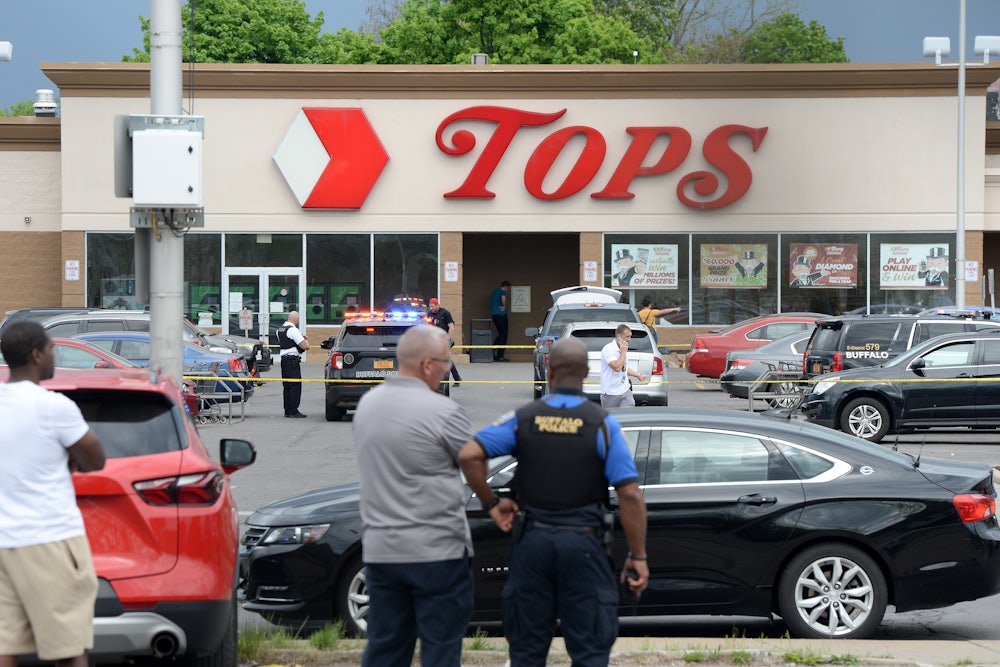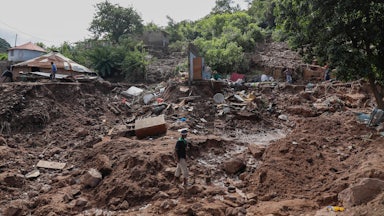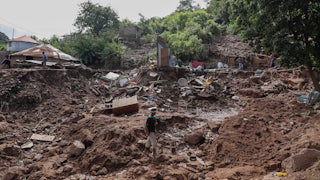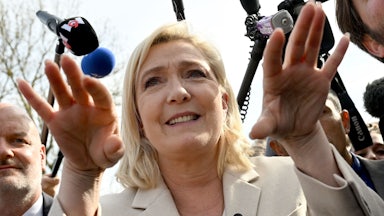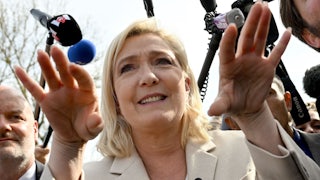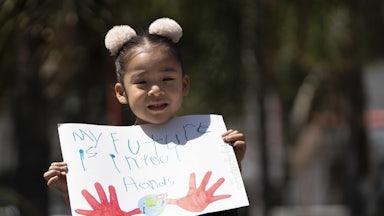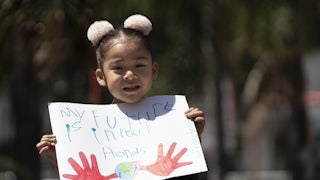Before attending a conference for climate deniers a few years back, I received two pieces of advice from researchers who frequent that circuit: first, that most of what’s said at climate denial events is projection; and second, that there’s no sense trying to find coherence in any of it.
What I heard that week will sound familiar to anyone who’s watched Fox News or a Republican attack ad in the last five years: Radical environmentalists treat rising temperatures as a Trojan horse for socialism. Maybe climate change does exist—maybe that’s even a good thing!—but we can’t know for certain either what’s causing it or what to do about it.
Following suit, keynote speaker and California Congressman Tom McClintock said that the left should not be allowed to stake an “uncontested” claim to climate science. “They carry the argument that the earth hangs in the balance,” he told the crowd, “and if the earth truly hangs in the balance, well then no measure is too extreme.”
On Friday, the 18-year-old white man now charged with having shot 13 people and killed 10 in a Buffalo supermarket posted a sprawling 180-page white supremacist manifesto shortly before opening fire, noting that he had deliberately chosen to terrorize a store in a predominately Black neighborhood with predominately Black clientele, having set out to “kill as many blacks as possible.” Like mass shooters in New Zealand and El Paso, Texas—who set out to murder Muslims and Latinos, respectively—he also referred to himself as an ecofascist, pointing to overpopulation of nonwhite people as a driver of environmental destruction in a rant that amounted to microwaved Blood and Soil nationalism.
“For too long,” Buffalo shooter Payton Gendron wrote, echoing McClintock, “we have allowed the left to co-opt the environmentalist movement to serve their own needs.” He blamed the left for “presiding over the continued destruction of the natural environment itself through mass immigration and uncontrolled urbanization, whilst offering no true solution to either issue.”
Gendron’s embrace of the “great replacement theory”—the idea that white people are being systematically overrun by nonwhite people, heartily espoused by the likes of Tucker Carlson and all manner of prominent Republicans—has grabbed headlines. But last Friday’s shooting and others in recent years have also made something else clear: that the right is breeding a new generation of environmental extremists.
The barb of “environmental extremism,” of course, is one that conservatives traditionally lob at the left. But the left’s “environmental extremists” are by and large engaging in lobbying and nonviolent direct action to urge the world’s governments to spend trillions of dollars a year decarbonizing the global economy to keep temperatures from rising above 1.5 degrees Celsius (2.7 degrees Fahrenheit)—a goal that remains perilously far off. The right’s environmental extremists, by contrast, have murdered scores of people in acts of vigilante ethnic cleansing.
How they got there isn’t hard to track. Climate topics still verboten for right-wing elites—many of whom are getting paid by polluting industries directly, and accordingly treat fossil fuels as another front in the culture war—are fair game for the rabble they’re stoking, particularly the young and Nazi-meme-addled.
Sixty percent of young people surveyed by the University of Bath last year reported being “extremely” or “very” worried about the climate crisis. More than half said it makes them feel “afraid, sad, anxious, angry, powerless, helpless, and/or guilty.” Fortunately, in the United States, concerns about climate change and the environment have tended to go hand in hand with liberal views on everything from abortion to immigration. But that’s not something to take for granted.
The paranoid racist fantasies of national decline being spun by the likes of Carlson, J.D. Vance, and other “populist” GOP luminaries offer a grab bag of ideological frameworks that viewers can map onto their own set of concerns. Statistically speaking, that will include the climate crisis, whether or not rising temperatures are a central focus. As that crisis becomes unavoidable for more and more people in the U.S.—already dealing with extreme heat and rising temperatures—it stands to reason that the ranks of right-wing environmental extremists will grow. Prominent Republicans have also made guns widely available to help such extremists act on their beliefs as the world warms.
Carlson has casually flirted with ecofascism in recent years; after all, it’s a short conceptual jump from both the great replacement theory and the garden-variety white supremacy that may as well be the GOP party line. “Isn’t crowding your country,” Carlson mused in 2019, in conversation with the Heartland Institute’s Justin Haskins, “the fastest way to despoil it, to pollute it, to make it a place you wouldn’t want to live?”
One of the defining fights of the twenty-first century will be over access to land that’s safe to live on. Half of all addresses in the contiguous U.S. already face some degree of wildfire risk, according to data released this week. By 2070, 19 percent of the world will be too hot for humans to live on. Residents of Southeast Asia have experienced such temperatures since March, as temperatures in Delhi reached 120 degrees Fahrenheit this week.
Prominent voices on the right are giving their base a road map to navigate that world in zero-sum terms. Meanwhile, their representatives in Congress are doing everything in their power—from blocking climate policy to boosting drilling—to ensure that the situation continues to get catastrophically worse. It should come as no surprise that this toxic cocktail is already showing up in shooter manifestos. After all, “if the earth truly hangs in the balance, well then no measure is too extreme.”
